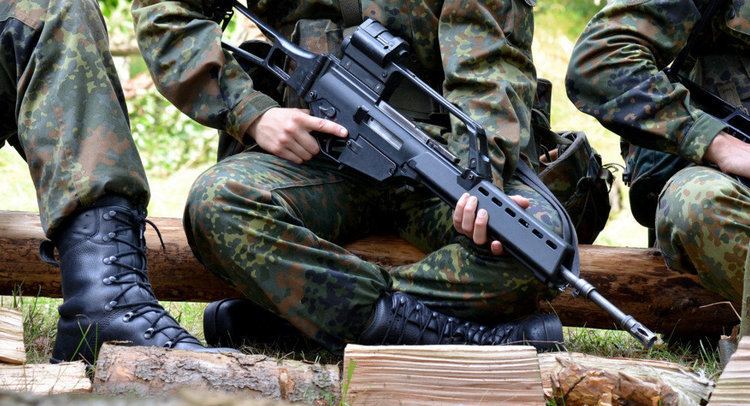 | ||
Is russia testing donald trump in eastern ukraine inside story
Eastern Ukraine or East Ukraine (Ukrainian: Східна Україна, Skhidna Ukrayina; Russian: Восточная Украина, Vostochnaya Ukraina) generally refers to territories of Ukraine east of the Dnieper river, particularly Kharkiv, Luhansk and Donetsk oblasts. Dnipropetrovsk and Zaporizhia Oblasts sometimes are also regarded as Eastern Ukraine. In regard to traditional territories the area encompasses portions of the southern Sloboda Ukraine, Donbas, the western Azov Littoral (Pryazovia).
Contents
- Is russia testing donald trump in eastern ukraine inside story
- Geography
- Cities and population
- History
- Culture and language
- Public opinion
- References
Almost a third of the country's population lives within the region, which includes several cities with population of around a million. Within Ukraine, the region is the most highly urbanized, particularly portions of central Kharkiv Oblast, south-western Luhansk Oblast, central, northern and eastern areas of Donetsk Oblast.
Geography
The region stretches from southern areas of the Central Russian Upland to the northern shores of the Sea of Azov, from the eastern border with Russia to Black Sea and Dnieper lowlands (including the left banks of Dnieper) to the west. Aside of Dnieper, the major river of eastern Ukraine is Seversky Donets which gave the name to the main economical region for that portion of the country, Donbas (Donets basin).
Cities and population
The territory is heavily urbanized and commonly associated with the Donbas. The three largest metropolitan cities form an industrial triangle within the region. Among the major cities with population of over 200,000 people are Kharkiv, Dnipropetrovsk, Donetsk-Makiivka, Zaporizhia, Mariupol, Luhansk, Horlivka and Kamianske. Cities of Donetsk and Makiivka create what is known as urban sprawl with very close proximity to other important cities such as Horlivka and Yenakieve.
The Zaporizhia and Dnipropetrovsk Oblasts are more frequently associated with Southern Ukraine, although the western portion (the Kryvyi Rih basin) of Dnipropetrovsk Oblast is often included with Central Ukraine.
History
A large majority of voters in eastern Ukraine (83% or more in each oblast) approved Ukraine's declaration of independence in the 1991 referendum, although the numbers were not as high as in the west.
In 2014, pro-Russian protests took place in parts of eastern Ukraine. Some of the protesters were "tourists" from Russia. The war in Donbass resulted in thousands of deaths and over a million people leaving their homes. As of 2016, about half of the territory of Donbas is controlled by the self-proclaimed Donetsk People's Republic and Luhansk People's Republic.
Culture and language
According to the 2001 census, the majority of Eastern Ukraine's population are ethnic Ukrainians, while ethnic Russians form a significant minority. The most common language is Russian, having long dominated in government and the media. When Ukraine became independent, there were no Ukrainian-language schools in Donetsk.
Noticeable cultural differences in the region (compared with the rest of Ukraine except Southern Ukraine) are more "positive views" on the Russian language and on the Soviet era and more "negative views" on Ukrainian nationalism.
During elections voters of the Eastern (and Southern) oblasts (provinces) of Ukraine vote for parties (CPU, Party of Regions) and presidential candidates (Viktor Yanukovych) with a pro-Russian and status quo platform. The electorate of CPU and Party of Regions is very loyal to them.
Effective in August 2012, a law on regional languages entitled any local language spoken by at least a 10% of the population to be declared official within that area. Within weeks, Russian was declared as a regional language in several southern and eastern oblasts and cities. From that point Russian could be used in those cities'/oblasts' administrative office work and documents. On 23 February 2014, the law on regional languages was abolished, making Ukrainian the sole state language at all levels even in Eastern Ukraine, but this vote was vetoed by acting President Oleksandr Turchynov on 2 March. A survey found that eastern oblasts preferred "second official language" over "state language" status for Russian.
Public opinion
A 2007 survey by the Razumkov Centre asked "Would you like to have your region separated from Ukraine and joined another state?" In eastern Ukraine, 77.9% of respondents disagreed, 10.4% agreed, and the rest were undecided.
In a poll conducted by the Kyiv International Institute of Sociology in the first half of February 2014, 25.8% of those polled in East Ukraine believed "Ukraine and Russia must unite into a single state", nationwide this percentage was 12.5%.
A November 2015 poll carried out by Rating Group Ukraine in Donetsk and Luhansk oblasts, except in DPR and LPR-controlled areas, found that 75% of residents wanted the entire Donbas region to stay in Ukraine, 7% said that it should join Russia, 1% wanted it to become an independent country, and 3% said that DPR and LPR-controlled territories should leave and the rest of Donbas remain in Ukraine. When asked if Russian-speaking citizens are under pressure or threat, 82% said 'no' and 11% said 'yes'. 2% "definitely" and 7% "somewhat" supported Russia sending troops to "protect" Russian-speakers in Ukraine, while 71% did not. 50% wanted Ukraine to remain a unitary country, 14% wanted it to be a federal country, 13% said it should remain unitary but without Crimea, and 7% wanted it to be divided into several countries. If they had to choose between the Eurasian Customs Union and the European Union, 24% in East Ukraine (including Kharkiv oblast) preferred the ECU and 20% preferred the European Union (in Donbas: 33% for the ECU, 21% for the EU). On joining NATO, 15% were for, 15% were against, and most said that they would not vote or it was difficult to answer (in Donbass: 16% for, 47% against). East Ukrainians were less likely to vote in parliamentary elections.
